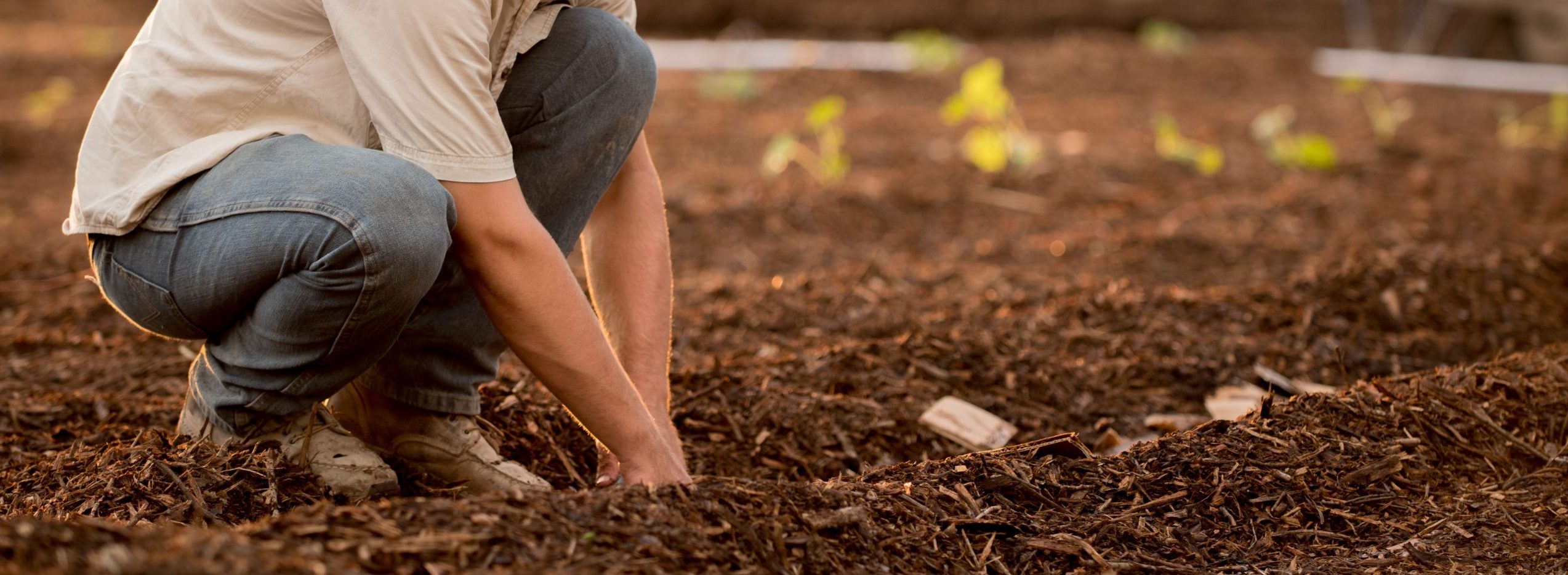
Planting guide
Preparing your garden well for new plants is one of the best investments you can make for your landscape. In nature, plants are part of a sophisticated ecosystem where they rely on other plants and animals for food, staking, mulching and pruning. Use the tips below to give your new plants the best start in your garden.
Soil preparation
Aeration and good drainage are essential for a strong root system and healthy growth. You can improve your soil by:
- Removing all weeds as they compete for space and food.
- Digging over the area you are planting in to a depth of 25-30cm, breaking up any clods of soil.
- If soil is heavy clay, add gypsum ( 1-1.5kg/sq.m) or soil conditioner and fork well into soil.
- If your soil is light and sandy, dig in well-rotted compost or a soil conditioner.
Poorly drained areas may need artificial drainage and will benefit from a raised soil level. Use a a quality native garden mix when raising soil levels.
Planting
A thriving garden starts with correct planting. Follow the steps below to give your plants a head start.
- Soak your plants thoroughly before removing them from the container.
- Dig a hole twice the width and one and half times the depth of the plant container. Make sure to break up the soil at the bottom of the hole thoroughly.
- Fill the hole with water and allow it to drain away.
- Remove the plant from its container, making sure not to disturb major roots. Check that roots are not coiled at the bottom of the container.
- Place plant into hole and backfill with soil and press firmly so the plant is held in place. There is no need to stamp around the plant as this will compact the soil and not allow plant roots to move through the soil.
- Add controlled release fertiliser, about a tablespoon, and thoroughly mix in with the soil at the top of the hole. Water in well.
If your topsoil is shallow and underneath is heavy clay, build up soil to a height where the plant’s roots are just above the topsoil and the diameter of the mound is one metre to prevent drying out.
Your newly planted plant should be watered at least once a week for the first 12 weeks or until it becomes established. In warmer weather you will need to water more often – check the soil by poking your finger into it and water if it feels dry.
Fertilising
All plants should be fertilised at the time of planting.
- Use a controlled-release native fertiliser at a rate of 1 tablespoon per plant – this should be mixed in with the soil at planting. When the plant is watered in, the fertiliser will activate through heat and moisture.
- Cow manure may be used and mixed with existing soil at a ratio of no more than 50:50 but must be very well composted and kept away from the base of the plant.
- Seasol is useful as a tonic for plants and can be used every fortnight at a slightly reduced rate to improve plant health and root growth while the plant is becoming established. It’s important to remember that Seasol is not a fertiliser – applying a slow-release fertiliser 2 times a year will give your plants the best results.
Staking
New plants do not need to be staked as they need wind rock to develop a healthy root system. However, in heavy wind areas, it is important to correctly stake plants to ensure their health and success.
When staking plants:
- Use strong, hardwood stakes that won’t rot.
- Use stocking material or fabric that is broad and long-lasting.
- Stake the plants so it will be blown away from the stake and not onto it.
- Don’t place the stake too close to the trunk.
- Check ties regularly to make sure they aren’t cutting into the plant.
- Remove stake and tie as soon as the plant has established.
Mulching
Mulch conserves water and keeps the roots of your plants cool in the hot months of the year. The type of mulch used will come down to personal preference.
- Leaf litter mulch breaks down quickly and will need to be replaced every six months. This mulch feeds the plants as it breaks down, becoming a natural fertiliser for your plants.
- Cypress mulch is a course mulch that is longer lasting, topped up every 12-18 months and is also a termite deterrent. Acid loving plants like natives benefit from this mulch.
- Pine bark mulch is longer lasting, only needing to be topped up every 2 years.
Pruning
In their natural habitat, native plants are regularly pruned by animals and birds and therefore grow better as a result.
- Pruning encourages more flowers, removes dead branches, encourages healthy, vigorous growth, shapes the plant and increases the lifespan of the plant.
- Tip pruning is one of the best methods, especially when the plant is young. Tip prune by simply pinch out soft tips or terminal buds with your thumb and forefinger. Generally, tip pruning can be done at any time of the year but is usually performed in the warmer months of the year when the plant is in its active growth phase.
- General pruning may be carried out after flowering. Cut off old flower heads and remove branches to the nearest healthy new growth point.
SYDNEY WILDFLOWER NURSERY
Since 1983, the Sydney Wildflower Nursery at Heathcote has been providing residents and visitors from around Australia with quality native Australian plants.
Supplying plants for jobs big and small we pride ourselves on our knowledge, passion and extensive range of beautiful and unusual Australian native trees, shrubs and wildflowers.
